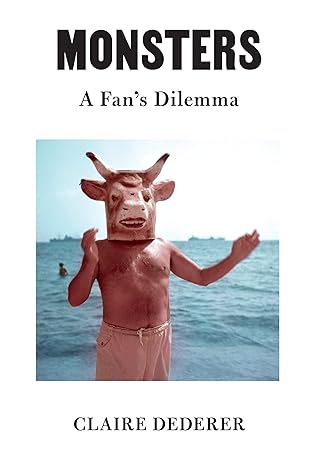More on this book
Community
Kindle Notes & Highlights
It was a room that suggested—all those books—that human problems could be solved by the application of careful thought and considered ethics.
I’d spent my life being disappointed by beloved male artists: John Lennon beat his wife; T. S. Eliot was an anti-Semite; Lou Reed has been accused of abuse, racism, and anti-Semitism (these offenses are so unimaginative, aside from everything else).
Or do we believe genius gets special dispensation, a behavioral hall pass?
It was a cultural version of Gillian Flynn’s famous “cool girl” passage from the novel Gone Girl: “Men always say that as the defining compliment, don’t they? She’s a cool girl. Being the Cool Girl means I am a hot, brilliant, funny woman who adores football, poker, dirty jokes, and burping, who plays video games, drinks cheap beer, loves threesomes and anal sex.”
“I have built a working miniature replica of the patriarchy in my mind.”)
In high school, even the ugly girls are beautiful.” A (male) high school teacher once said this to me. (He later mentioned that sometimes he had to go into the bathroom and jerk off because of those high school girls and their high school beauty.)
A thinking woman is stuck—distanced from the body, from beauty, from life itself.
If a woman can think, she can’t come; if she can come, she can’t think.
When you’re having a moral feeling, self-congratulation is never far behind. You are setting your emotion in a bed of ethical language, and you are admiring yourself doing it. We are governed by emotion, emotion around which we arrange language. The transmission of our virtue feels extremely important, and strangely exciting.
I suppose this is the human condition, this sneaking suspicion of our own badness. It lies at the heart of our fascination with people who do awful things.
“My plan was to never get married. I was going to be an art monster instead. Women almost never become art monsters because art monsters only concern themselves with art, never mundane things. Nabokov didn’t even fold his own umbrella. Vera licked his stamps for him.”
When someone says we ought to separate the art from the artist, they’re saying: Remove the stain. Let the work be unstained. But that’s not how stains work.
Now it seems impossible to shake work loose from biography. We swim in biography; we are sick with biography.
Our selves are constructed from the shitty stuff of consumption, but we remain feeling people nonetheless.
I have been a teenager predated by older men; I have been molested; I’ve been assaulted on the street; I’ve been grabbed and I’ve been coerced and I’ve escaped from attempted rape. I don’t say this because it makes me special. I say it because it makes me non-special.
In certain ways this is a book about broken hearts, and teenagers are the world’s leading experts on heartbreak.
It’s hard not to participate in a kind of fantastical utopianism when it comes to thoughts like these—if we could get rid of the gnarly old men, we’d live in an innocent world of good people making good art.


